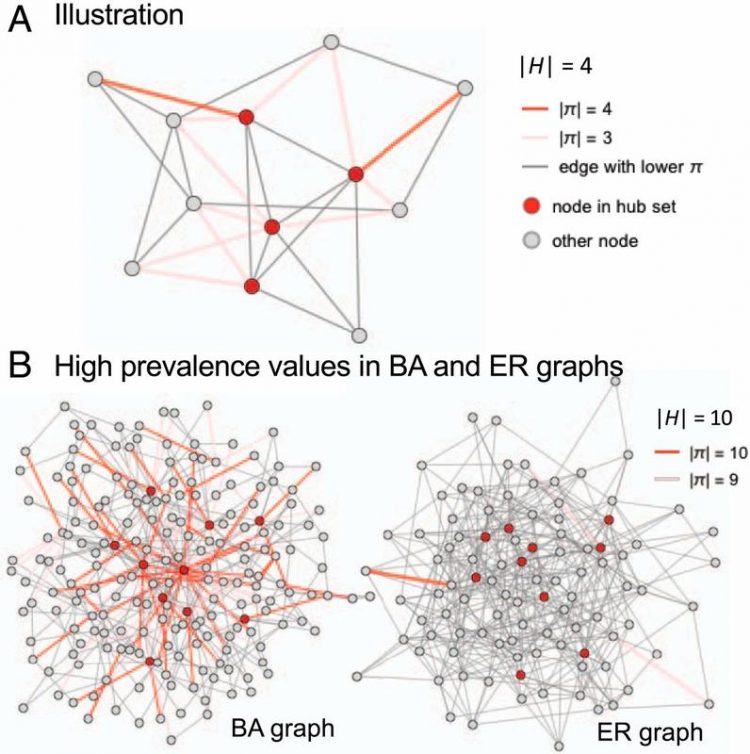Understanding collective behavior in networks better

Illustration of the hub-set-orientation prevalence. Marc-Thorsten Hütt
Hütt and Moretti are breaking new ground with their research. How collective excitation patterns in complex networks can be recognized and investigated is an open question.
For the abstract representation of a real network, the scientists use mathematical graphs consisting of nodes and edges (or links), the pairwise connections between the nodes. “In such graphs, we can then identify local features for collective behavior,” explained Hütt.
In the collective case, excitations along the links often run preferably in one direction. Responsible for this asymmetric use of links are waves, which form around highly interconnected elements in a network, the “hubs”.
If these hubs are also closely interlinked and thus increase their influence on the entire network, the emergence of waves and, along with it, the asymmetric link usage are even more pronounced.
“With the help of relatively simple mathematical indicators, asymmetric link usage can be predicted quite accurately,” said Hütt. “This creates an elegant connection between network architecture and self-organized dynamics within a network.”
Over a period of four years, the duo conducted research on the topic. “I am very pleased that in the end such a clear picture of the connection between network architecture and collective patterns emerged,” said Professor Hütt. The scientists want to continue their work. “There are many other collective patterns that make you wonder what they look like in networks.”
About Jacobs University Bremen:
Studying in an international community. Obtaining a qualification to work on responsible tasks in a digitized and globalized society. Learning, researching and teaching across academic disciplines and countries. Strengthening people and markets with innovative solutions and advanced training programs.
This is what Jacobs University Bremen stands for. Established as a private, English-medium campus university in Germany in 2001, it is continuously achieving top results in national and international university rankings. Its more than 1,500 students come from more than 120 countries with around 80% having relocated to Germany for their studies. Jacobs University’s research projects are funded by the German Research Foundation or the EU Research and Innovation program as well as by globally leading companies.
For more information: www.jacobs-university.de
Marc-Thorsten Hütt
Professor of Computational Systems Biology
Mail: m.huett@jacobs-university.de
Tel.: +49 421 200-3238
Media Contact
All latest news from the category: Life Sciences and Chemistry
Articles and reports from the Life Sciences and chemistry area deal with applied and basic research into modern biology, chemistry and human medicine.
Valuable information can be found on a range of life sciences fields including bacteriology, biochemistry, bionics, bioinformatics, biophysics, biotechnology, genetics, geobotany, human biology, marine biology, microbiology, molecular biology, cellular biology, zoology, bioinorganic chemistry, microchemistry and environmental chemistry.
Newest articles

A new way of entangling light and sound
For a wide variety of emerging quantum technologies, such as secure quantum communications and quantum computing, quantum entanglement is a prerequisite. Scientists at the Max-Planck-Institute for the Science of Light…

Telescope for NASA’s Roman Mission complete, delivered to Goddard
NASA’s Nancy Grace Roman Space Telescope is one giant step closer to unlocking the mysteries of the universe. The mission has now received its final major delivery: the Optical Telescope…

Sensitive ceramics for soft robotics
Most people think of coffee cups, bathroom tiles or flower pots when they hear the word “ceramic”. Not so Frank Clemens. For the research group leader in Empa’s Laboratory for…



